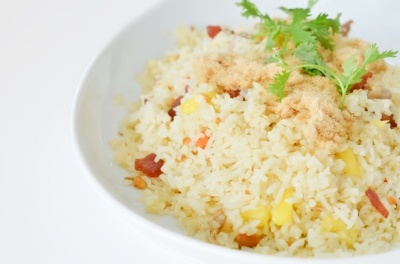
We often think of Bacillus bacteria as being our friend in food processing with the type of enzymes that are produced for producing sugar, various protein hydrolysates and even for cleaning clothes. Unfortunately, they are not always benign and in some cases Bacillus bacteria are positively dangerous. We look at a few Bacillus species associated with food poisoning.
Bacillus cereus
One bacteria in the genus causing severe food borne illness is Bacillus cereus which is a facultative anaerobe, Gram-positive and spore-forming (Arnesen et al., 2008). It usually grows in aerobic conditions and isn’t a major issue until conditions for its growth predominate. It grows between 4.4°C and 48°C with the optimum between 28°C and 35°C. It is often found throughout the environment but is especially common in vegetation, dairy products especially raw milk, soil, cereals and spices. It causes spoilage of cream for example producing what is often known in the vernacular as bitty cream.
Bacillus cereus causes two types of food poisoning. In the United Kingdom, the type most commonly seen involves symptoms of nausea and vomiting about one to five hours later ingesting the contaminated food. The types of food most susceptible to B. cereus growth are cereals especially rice and cooked rice in particular, various vegetables, herbs and spices, dried foods including custard, cornflour, soups, vanilla slices and raw vegetable sprouts in particular.
The symptoms of poisoning are acute nausea, vomiting, abdominal pains with some diarrhoea after 12 to 24 hours.
The spores will survive a typical pasteurisation or cooking process and will undergo rapid growth with the formation of an exotoxin which is the main cause of the symptoms. This often occurs if the food is not cooled quickly or refrigerated in time.
A number of toxins are produced and one of the exotoxins is very highly heat-resistant. It survives even an ultra-high temperature process as 126°C for 90 minutes. No amount of reheating will destroy the toxin once produced. When the toxin has built up in sufficient concentrations in the food itself, the onset of symptoms is between 1 and 6 hours.
The other type of B. cereus food poisoning is rare in the UK and has its onset between eight and sixteen hours. The toxins are produced by the bacteria in the intestine and the symptoms are diarrhoea and various types of abdominal pain.
Detection of B. cereus food poisoning is not straightforward. It is often found in relatively low, non-dangerous levels in many food stuffs. Large numbers, about 100,000 plus per gram need to be isolated to prove that any food has been contaminated. Faecal specimens often have to be assessed in the laboratory under refrigeration to avoid other micro-organisms multiplying and ruining the analysis by swamping it.
Control Of Bacillus cereus
All foods which can support this bacteria need thorough cooking with rapid cooling afterwards if the food is to retain any shelf-life. The food also needs to be stored properly at the correct temperatures and in general avoid rewarming.
B. subtilis & B. licheniformis
Two other types of Bacillus bacteria have been linked to food poisoning but not that often. They are B. subtilis and B. licheniformis and are commonly found in meat, vegetables and some meat products especially pasties. Both these bacteria are spore-formers and they are linked to cases of nausea, vomiting and usually within one hour of consumption of the contaminated food. Sometimes diarrhoea occurs but after about 12 hours. There is a famous case of B. subtilis poisoning in 1994 where meat pasties were seasoned with contaminated black pepper because the spores had survived the cooking process.
References
Arnesen, L., A. Fagerlund, Granum, P. (2008) From soil to gut: Bacillus cereus and its food poisoning toxins. FEMS Microbiol. Rev. 32 pp. 579–606


Not nice at all in my view!